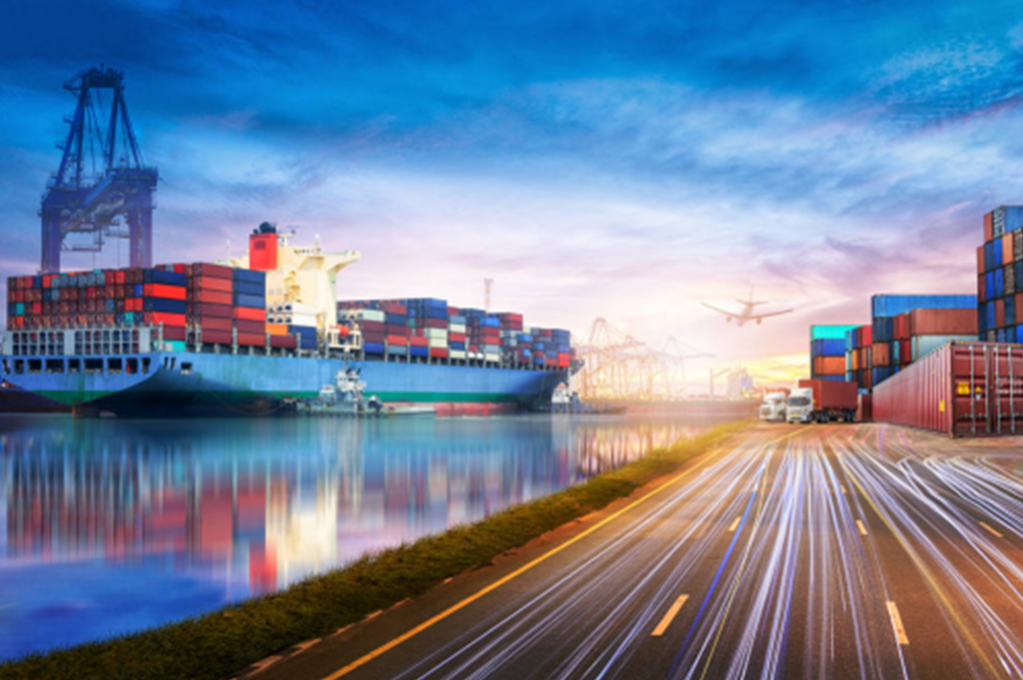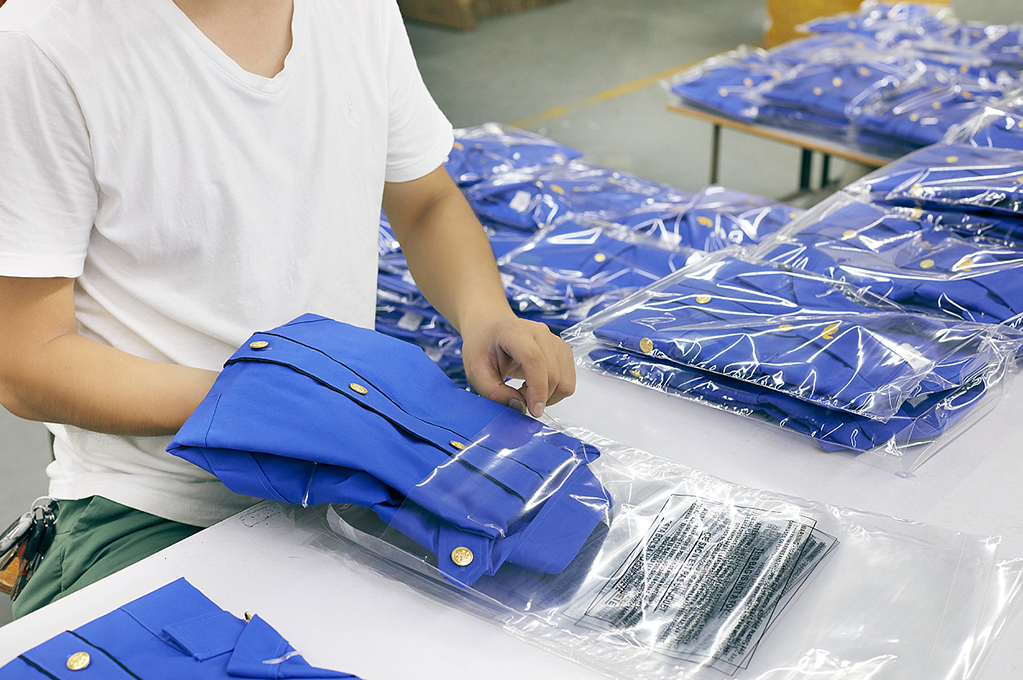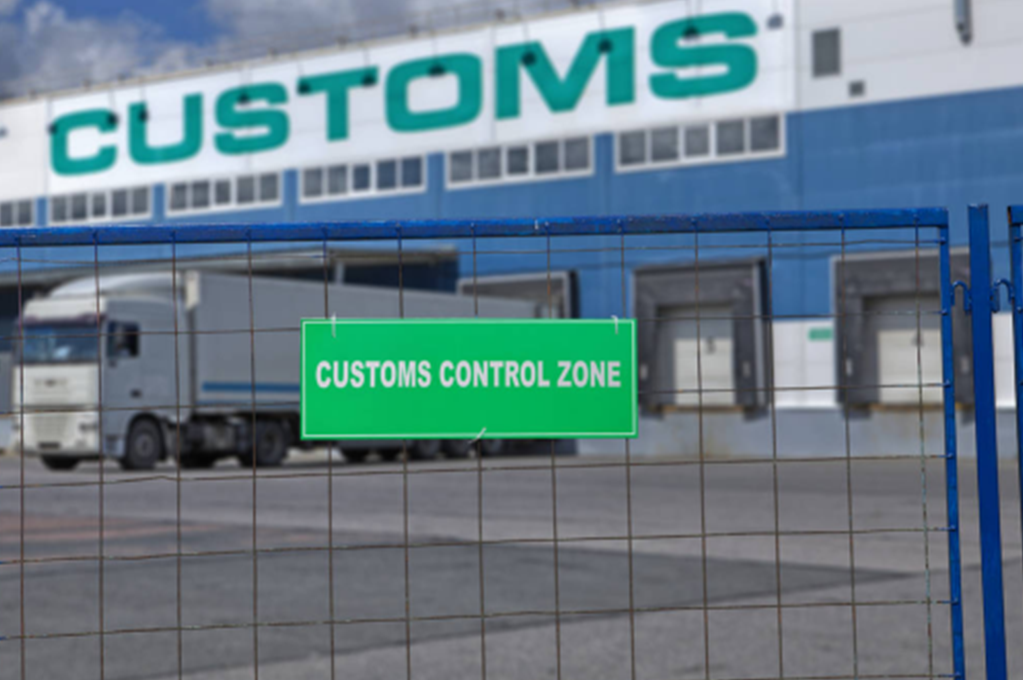A Comprehensive Guide to the Transportation of Importing Garments from China
As the global market continues to expand, importing garments from China has become an increasingly popular choice for businesses around the world due to its competitive pricing and diverse manufacturing capabilities. This article aims to provide you with a comprehensive understanding of the key factors and steps to consider when importing clothing from China.
Introduction to the Transportation of Importing Garments
What is the Transportation of Importing Garments
Importing garments refers to the process of transporting clothing products from one country (typically the manufacturing country, such as China) to another country (usually the consumer market). This process encompasses multiple stages, from signing a contract with the supplier to the final arrival of the goods at their destination and entering the market through customs procedures.
Procurement and Contract Signing Before transportation begins, it is essential to identify a supplier and sign a contract that includes key terms such as product specifications, quantity, price, and delivery dates.
Production and Packaging After completing the production of garments according to the contractual requirements, the next step is packaging. The garments must be properly packaged to prevent damage during long-distance transportation.
Selection of Transport Method Common transport methods include air freight, sea freight, land transport, or courier services. The choice depends on the value, weight, volume of the goods, and the required delivery time.

พิธีการศุลกากร When the goods depart from China, they must go through export customs clearance procedures. Upon arrival in the destination country, import customs clearance is required. This process involves submitting necessary documents such as commercial invoices, packing lists, and certificates of origin, along with paying the corresponding duties and taxes.
Domestic Distribution After the international transportation is completed, domestic logistics need to be arranged to deliver the goods to the specified location.
Importance of Importing Garment Transportation
Ensuring Cargo Safety: Garment products often need to travel long distances from the manufacturing site to the retail destination. Throughout this process, ensuring the safety and integrity of the goods is critical. Professional garment transportation services offer appropriate packaging and handling methods to minimize the risk of damage during transit.
Time Management: The fashion industry is highly sensitive to timing, with seasonal and trend-driven demands requiring that garments reach the market on schedule. Efficient transportation services guarantee timely delivery, which is essential for meeting market demands, avoiding stock accumulation, and maintaining good customer relationships.
Cost Efficiency: Reasonable logistics arrangements can help businesses reduce transportation costs. By integrating transportation resources and optimizing route planning, unnecessary expenses can be minimized, improving the overall cost efficiency of the supply chain.
Compliance: Importing garments involves compliance with the laws and regulations of multiple countries and regions, including tariffs and inspection requirements. Professional transportation companies typically have experience handling these complex procedures, helping businesses avoid additional costs or delays due to unfamiliarity with local laws.
Environmental Sustainability: As consumer awareness of environmental issues grows, more brands are focusing on the carbon footprint of their logistics processes. Choosing service providers that adopt green transportation methods not only contributes to environmental protection but also enhances brand image.
China is one of the world’s largest producers of textiles and garments, boasting a complete industrial chain and a vast labor force. This makes Chinese-made clothing significantly cost-effective. Compared to developed countries, China has lower labor costs, and with government support policies such as tax incentives and infrastructure investments, the overall production costs are well-controlled, enabling the provision of reasonably priced products to global buyers.

China’s garment manufacturing covers a full range of products from low-end to high-end markets. Whether it’s basic T-shirts and jeans or complex designer fashion, suitable products can be found in China. This diverse product line meets the needs of different markets and consumers.
Chinese garment manufacturers possess strong production capabilities and can respond quickly to changes in market demand. Many manufacturers offer small-batch customization services while also being able to rapidly scale up production to meet large order volumes. This flexibility makes China an ideal partner for many fashion brands and retailers.
In recent years, with the development of China’s economy and technological advancements, the garment industry has been continuously upgrading. Many Chinese enterprises are now focusing on design and research, enhancing the added value of their products. By introducing advanced production equipment and technologies, they are consistently improving product quality. Some have even embarked on creating their own brands, demonstrating strong innovative capabilities.
China’s policy of opening up continues to deepen, and the trade environment is steadily improving. After joining the World Trade Organization (WTO), China has further opened its markets, simplified import-export procedures, and increased trade facilitation. Additionally, China has signed Free Trade Agreements (FTAs) with many countries and regions, reducing import-export tariffs and promoting bilateral or multilateral trade.
Thanks to a well-developed logistics infrastructure and advanced information technology applications, the efficiency of China’s logistics sector is continually improving. Whether it’s domestic transportation or international freight, there is assurance that goods will be delivered promptly and accurately to their destinations. This is particularly important for the fashion industry, which relies heavily on quick turnover.
Market Research: Identify potential suppliers through trade shows, online platforms (such as Alibaba, Made-in-China.com, etc.), or trade delegations. Sample Ordering: Contact suppliers to obtain samples and evaluate whether the product quality and design style meet your requirements. Qualification Review: Investigate the supplier’s production capacity, quality management system, and feedback from previous clients.

Signing the Contract and Production Supervision
Negotiating Terms: Discuss details with the supplier regarding product specifications, pricing, delivery schedules, payment conditions, and other relevant details. Agreement Execution: Ensure the contract is clear, covers all necessary clauses, and is agreed upon by both parties.
Production Orders: Place production orders based on the contract details. Quality Control: Engage a third-party inspection agency or send personnel to the factory to monitor quality, ensuring that production meets expected standards.
Logistics Arrangement: Coordinate with logistics companies to arrange the transport of goods from China to the destination country.
Insurance Arrangement: Purchase appropriate transportation insurance for the goods to cover potential losses during transit.
Customs Declaration: Once all required documents are prepared, declare the goods to the customs authority of the destination country and submit the customs declaration form and related documents.
Payment of Duties: Pay the import duties and other applicable taxes based on the declared value of the goods and the corresponding tariff rates.
Inspection Coordination: Customs authorities will inspect the declared goods to verify if the information matches the declaration.
Problem Resolution: If issues arise, communicate promptly with customs or the agent to resolve them.
Cargo Release: After passing customs inspection, the cargo will be released.
Final Inspection: Upon receipt, inspect the goods again to ensure they are undamaged and the quantities are correct.
Protection Against Damage: Use appropriate materials such as plastic bags, cardboard boxes, and pallets to safeguard garments against moisture, dust, and physical damage during transit. Bubble wrap or foam inserts can be used for delicate items.
Labeling: Clearly label each package with the contents, destination address, and any special handling instructions. Include barcodes or QR codes for easy tracking.
Compliance with Standards: Ensure packaging complies with international standards and regulations, such as those set by the International Air Transport Association (IATA) for air freight or specific customs requirements.
Eco-Friendly Solutions: Consider using biodegradable or recyclable packaging materials to reduce environmental impact.

Transportation Methods
Mode of Transport Selection: Choose the most suitable mode of transport based on the urgency, quantity, and value of the garments. Air freight is faster but more expensive, while sea freight is slower but cost-effective for bulk shipments.
Carrier Reputation: Select reputable carriers with a proven track record of delivering goods on time and securely. Check reviews and ratings from previous customers.
ประกันภัย: Arrange for adequate insurance coverage for the shipment to protect against loss or damage during transit.
Documentation: Prepare all necessary shipping documents, including invoices, packing lists, bills of lading, and customs declarations. Ensure these are accurate and comply with legal requirements.
พิธีการศุลกากร
Tariff Classification: Correctly classify the garments to determine the applicable duties and taxes. Misclassification can lead to delays and additional fees.
Compliance: Adhere to all import regulations and restrictions in both the exporting and importing countries. Obtain any required permits or licenses.
Pre-Arranged Clearances: Work with a customs broker to expedite the clearance process and handle any unforeseen issues that may arise.
Route Planning: Optimize the route to minimize transit time and costs. Consider factors such as weather, port congestion, and transit hubs.
Tracking: Implement a tracking system to monitor the shipment’s progress from origin to destination. Provide real-time updates to stakeholders.
การจัดส่งไมล์สุดท้าย: Ensure a smooth transition from the port or airport to the final destination. Use reliable local couriers for door-to-door delivery.

Quality Assurance
Pre-Shipment Inspection: Conduct pre-shipment inspections to verify the quality and condition of the garments before they leave the factory.
In-Transit Monitoring: Monitor the shipment’s environmental conditions, such as temperature and humidity, especially for sensitive materials.
Post-Delivery Checks: Perform final checks upon arrival to confirm the integrity of the packaging and the condition of the garments.
Customs Declaration Process
Preparation of Documents
- Commercial Invoice: Lists detailed information about the goods, including types, quantities, unit prices, and total values.
- Packing List: Details the contents of each package.
- Bill of Lading/Air Waybill: Issued by the carrier, confirming that the goods have been loaded and are ready for transport.
- Certificate of Origin: Verifies the place of manufacture of the goods, which may affect tariff rates in some cases.
- Other Required Documents: Such as brand authorization letters, product inspection reports, sanitary quarantine certificates, etc.
Submission of Application
- Submit Documents: Submit the aforementioned documents to the customs authority or authorized agent in the exporting country for export declaration.
- Pay Duties and Taxes: Depending on the type and value of the goods, pay the corresponding duties and taxes, such as Value Added Tax (VAT) and customs duties.
Cargo Inspection
- Random Checks: Customs has the right to conduct random inspections of declared goods to verify the authenticity and accuracy of the information.
Obtain Release Permit
- Release Approval: Once all documents have been reviewed and duties paid, customs will issue a release permit.

กระบวนการพิธีการศุลกากร
Select a Customs Broker
- Choose a Broker: Unless you are handling the process yourself, it is common to choose a professional customs broker to assist with the import clearance procedures. Ensure the selected broker has a good reputation and extensive experience.
Submit Import Documents
- Import Documentation: Submit all export declaration documents mentioned above, along with any additional required documents (such as import licenses, quota certificates, etc.) to the customs department of the destination country.
Pay Import Duties and Taxes
- Pay Duties: Similarly, pay the applicable import duties and taxes based on the type and value of the goods. Different countries have varying tariff rates and exemption policies, so it’s important to understand these beforehand.
Accept Cargo Inspection
- Inspection: The destination country’s customs may perform random sampling inspections to ensure the goods comply with local laws and regulations.
Obtain Release Notice
- Release Notification: After completing all procedures and paying relevant fees, customs will issue a release notice, allowing the goods to be transported from the port or airport to the final destination.
Points to Note
- Ensure Consistency: All information submitted to customs must be consistent across documents, including data on the quantity, weight, and value of the goods.
- Comply with Laws and Regulations: Understand and adhere to all laws and regulations concerning the import of garments in the destination country, including but not limited to environmental standards and safety requirements.
- Allow Sufficient Time: The customs declaration and clearance process can be time-consuming, especially during holidays or special periods, which may require longer processing times. Therefore, plan transportation in advance.
- Maintain Good Communication: Keep good communication with suppliers, logistics providers, and customs brokers to ensure all steps proceed as planned.
If you are importing clothing from China, brand authorization and intellectual property (IP) rights are crucial aspects that must be carefully considered. Overlooking these issues can lead to legal disputes, fines, and even the seizure of goods. Below are some key points to help you understand and manage brand authorization and IP issues when transporting clothing:

Confirmation of Legal Rights: Before importing clothing with specific brand labels, it is essential to confirm that you have obtained legitimate authorization for the brand. Importing products bearing another party’s trademark without permission may constitute trademark infringement.
Clear Contract Terms: Ensure that any contract signed with suppliers explicitly details the terms of brand authorization, including the duration, scope, and any limitations on the authorization.
Retention of Authorization Documents: Keep copies of all documents related to brand authorization, such as authorization letters and licensing agreements, so they can be presented to customs or other regulatory bodies if necessary.
Prevention of Trademark Infringement: Verify that the imported clothing does not infringe upon any existing trademarks. This can involve checking trademark databases to ensure there are no identical or similar trademarks.
Copyrights and Design Patents: Beyond trademarks, be aware of potential copyright or design patent infringements. For example, patterns and design elements on clothing might be protected by copyrights.
Anti-counterfeiting Measures: Choose reputable suppliers and take measures to verify the authenticity of products, such as requesting original factory certificates or conducting barcode scans.
Strategies for Addressing IP Issues
Due Diligence: Conduct thorough due diligence before entering into business relationships with suppliers, including reviewing their historical records and customer feedback.
Legal Consultation: Consult with professional legal advisors if uncertain about compliance, ensuring your actions adhere to relevant laws and regulations.
Risk Transfer: Include clauses in contracts regarding liability for IP infringement, specifying which party is responsible if an infringement occurs.
Ongoing Monitoring: Even after initiating imports, regularly monitor the market for new IP conflicts and adjust strategies accordingly.
Brand authorization and intellectual property issues are critical concerns for clothing importers. Ensuring legitimate authorization and respecting IP rights not only helps avoid legal risks but also contributes to maintaining the reputation and long-term development of your business. In practice, strict adherence to relevant laws and regulations, along with proactive measures to protect against infringement risks, should be prioritized.
Procurement Costs:
- Includes the direct purchase price of garments from suppliers, which is the most direct cost component of the project.
Transportation Costs:
- Varies depending on the chosen mode of transport (การขนส่งทางอากาศ, การขนส่งทางทะเล, road transport, etc.). Air freight is usually faster but more expensive, whereas sea freight is slower but more economical.
- Other considerations include fuel surcharges, insurance premiums, and packaging costs.
Customs Clearance Fees:
- Includes fees for all procedures required for export and import, such as export licenses, import licenses, etc.
- Service fees charged by customs brokers are also an essential part of these costs.

Taxes:
- Primarily refers to import duties, Value Added Tax (VAT), and other applicable taxes. Different countries and regions apply different rates to various types of goods.
Storage and Distribution:
- Temporary storage space may be needed in the destination country until the goods are distributed to retailers or end-users.
- Domestic distribution costs are also a significant consideration.
Contingency Costs:
- Such as additional storage fees due to delayed shipments, increased costs due to exchange rate fluctuations, etc.
Build a Cost Model:
- Create a detailed cost model that lists all potential expenses and estimates the amount for each item as accurately as possible.
Historical Data Analysis:
- If there are experiences from similar projects, historical data can be used to predict future costs.
Market Research:
- Conduct research to understand market price levels and obtain quotations from service providers like transportation companies and customs brokers.
Use Online Tools:
- Utilize cost calculators or relevant software tools available online to assist with estimations.
Consult Professionals:
- Seek advice from logistics experts, accountants, and other professionals to get expert opinions and recommendations.
Budget Management Strategies
Set Budget Caps:
- Define the total budget for the project and set caps for each cost category, which can serve as a basis for negotiation and procurement.
Continuous Monitoring:
- Continuously monitor actual expenses throughout the implementation process, compare them with the budget, and promptly identify discrepancies and take corrective actions.
Flexible Adjustments:
- Adapt the budget allocation as circumstances change to ensure sufficient funding for critical components.
Risk Management:
- Identify potential risk points, such as exchange rate fluctuations and policy changes, and develop corresponding contingency plans.
Cost Savings:
- Look for opportunities to save costs, such as obtaining discounts through bulk purchasing or optimizing logistics solutions to reduce transportation costs.
By employing these methods, you can achieve effective cost estimation and budget management for garment transportation, ensuring the smooth progress of the project.

When importing garments from China, it is essential for you to ensure the quality of the products and their compliance with the laws and regulations of the destination country. This is not only about protecting consumer health and safety but also reflects your company’s credibility and social responsibility.
Quality Inspection
Raw Material Inspection:
- Check the quality standards of raw materials used in making the clothing, such as fabrics, buttons, zippers, etc., including abrasion resistance, colorfastness, etc.
Finished Product Testing:
- After production, conduct inspections on finished garments, including measurements, sewing quality, changes in shape after washing, etc.
- Perform functional tests, such as wrinkle resistance, breathability, thermal insulation properties, etc.
Chemical Substance Content Testing:
- Verify that the clothing does not contain excessive amounts of harmful chemicals, such as formaldehyde, azo dyes, etc., which could pose health hazards to consumers.
Labeling and Instructions:
- Ensure that the labeling information is complete, including composition, washing instructions, manufacturer information, etc.
- Confirm that the instructions comply with the language requirements and formatting standards of the destination country.
Third-party Inspection:
- Commission professional third-party inspection agencies to conduct independent quality inspections to ensure objective and fair results.

Understanding Destination Regulations:
- Before importing, thoroughly research the relevant laws and regulations of the destination country concerning clothing imports, including but not limited to safety standards, environmental protection requirements, labeling rules, etc.
Product Certification:
- Depending on the destination country’s regulations, certain certification marks may be required, such as the CE mark in the EU or CPSIA (Consumer Product Safety Improvement Act) compliance in the U.S.
- Ensure that your supplier can provide the necessary product certification documentation.
Chemical Restrictions:
- Verify that the clothing complies with the chemical usage restrictions of the destination country, such as the list of substances under the EU REACH regulation.
Environmental Requirements:
- Check whether the production process adheres to environmental standards, such as the use of eco-friendly materials and reduction of waste emissions.
Social Responsibility Standards:
- Consider social responsibility by ensuring that suppliers comply with labor laws, do not employ child labor, and provide safe working environments.
Rules of Origin:
- Understand and comply with Rules of Origin, which can affect the imposition of tariffs.
Quality and Compliance Management
Establish a Quality Control System:
- Work with suppliers to establish a quality control system that ensures rigorous quality checks at every stage from raw material procurement to finished product delivery.
Regular Audits of Suppliers:
- Conduct regular audits of suppliers to ensure they consistently adhere to established quality standards and legal requirements.
Training Staff:
- Train procurement and quality control teams to keep them informed about the latest quality standards and regulatory requirements.
Documentation Management:
- Maintain all relevant quality inspection reports and compliance certification documents for future reference or for inspection by relevant authorities.
By following these steps, you can effectively guarantee the quality and compliance of imported clothing, protecting consumer rights and helping to build a strong brand image amidst fierce market competition.
Logistics Tracking
Select Reliable Logistics Providers:
- Choose logistics companies or freight forwarders with good reputations and comprehensive services to ensure they offer full tracking services.
Leverage Advanced Information Technology:
- Utilize technologies such as RFID (Radio-Frequency Identification), GPS tracking, and IoT (Internet of Things) to monitor the real-time location and status of shipments.
Obtain Tracking Numbers:
- Obtain a tracking number (Tracking Number) once the shipment is dispatched and use the official website or dedicated apps to check the status of the cargo.
Set Up Alert Mechanisms:
- Implement automatic alerts at critical points, such as when goods depart from port, arrive at transit stations, or are nearing their final destination.
Regularly Update Information:
- Ensure logistics information is updated promptly to detect and address issues in a timely manner.
Risk Management
Identify Risk Points:
- Identify major risk factors during the logistics process, such as natural disasters, human errors, damage to goods, delays, etc.
Develop Contingency Plans:
- Develop detailed contingency plans for various potential risks, including alternative routes and backup solutions.
Choose Appropriate Insurance:
- Purchase suitable cargo transportation insurance to ensure compensation in case of losses.
Strengthen Contract Management:
- Clearly define responsibilities in contracts with suppliers and logistics providers, especially regarding liabilities for delays, losses, or damages.
Enhance Collaboration with Logistics Partners:
- Maintain good communication with logistics service providers to ensure timely coordination and resolution of issues.
Diversify Supply Chain:
- Consider using multiple suppliers or logistics channels to spread risk and avoid disruptions caused by reliance on a single source.
Implement Quality Control:
- Implement quality control measures throughout the logistics process to ensure goods are not damaged during transportation.
Utilize Big Data Analytics:
- Use big data analytics tools to predict potential risk points and prepare preemptively.
Continuous Improvement:
- Regularly review logistics processes, summarize lessons learned, and continuously improve risk management practices.
This article might be a bit long, but I hope it can help you. If there’s anything unclear, feel free to contact NEW SPEED Logistics Company. We have professional sales representatives who will assist you.

